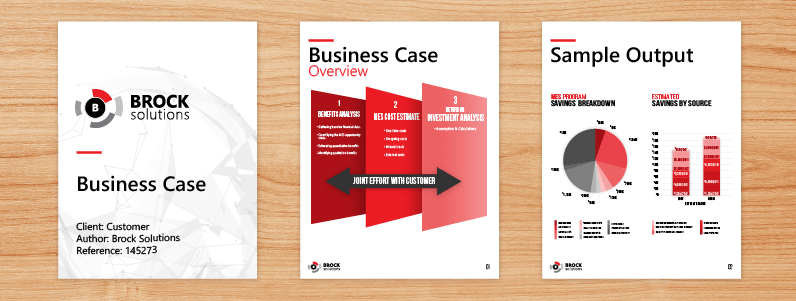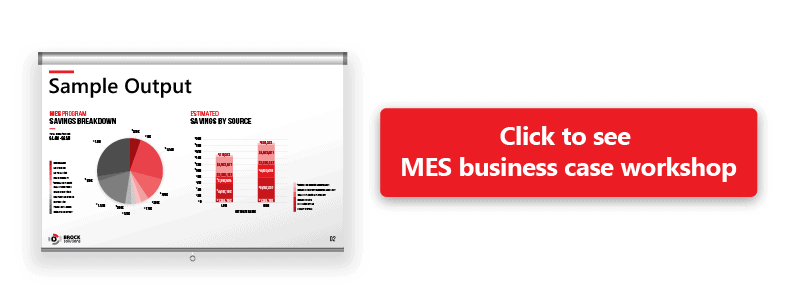Our first blog on this subject dealt with the importance of executive engagement. Without it, the digital journey will struggle at best, and most likely be derailed. So let’s assume senior leadership is fully engaged and ready to go. In our experience, sooner rather than later questions around business value will be asked.
Brock Solutions is currently working with an automotive company implementing an IIOT solution. The pilot project has gone extremely well – the customer couldn’t be happier; the solution works and they are getting real time visibility into their operation that previously didn’t exist. So the next step should be a global rollout of the solution – a no brainer! But not so fast. The CEO asked one simple but critical question – what is the business value of the solution?
And all too often this is where the dreaded start, stop, regroup, restart spiral starts.
For a variety of reasons, organizations struggle to quantify the value of digital solutions. So before we get into the “how to”, there are several challenges we have seen having participated and/or facilitated in creating a credible business case:
- The typical capital requisition process often doesn’t fit this type of initiative. When a company is buying a new machine, justification is usually a mathematical exercise. Going digital involves making several assumptions and judgments around what the art of the possible really is.
- Technology in and of itself doesn’t bring value – how it is used and the decisions taken does. Change management including people and process is critical to quantifying value.
- Engaging a broad base of stakeholders, including finance, is key. And preferably before the project starts.
- Obsolescence and business risk, particularly when it comes to replacing legacy Manufacturing Operations Management/Manufacturing Execution Systems, can be the initial driver to change. However when it comes to funding, the question of value is difficult to answer. Our view is obsolescence is similar to insurance – how much risk is acceptable?
- And finally accountability. We have seen many strong business cases be watered down because either groups or individuals are unable or unwilling to sign up for the numbers. This is where executive engagement is critical.
When Brock Solutions is engaged in helping a client build a business case for the digital journey, we ask several questions:
- What is the total cost of ownership of the proposed solutions?
- What is the total potential return in both quantitative and qualitative terms?
- What is critical versus nice to have? In one situation the executives saw the first draft of the business case as a “Santa Claus list” and asked the team to do it again.
- What are the key strategies of the organization and how does going digital enable the vision?

When identifying and articulating the business case there are key items that must be addressed.
Clearly define the business goals and objectives being addressed
There should be clear understanding if the business is looking to increase capacity, improve quality, reduce inventory on hand, improve new product introduction, provide clear work instructions to employees, reduce cycle time, among other goals. What are the metrics that go with the goals? For example a goal of the business could be to double output in the next 5 years while maintaining the lead over competitors as providing the top quality product. Once these goals are understood there are common objectives and language that can be evaluated. People start to look at the big picture.
Linking to business goals avoids tunnel vision
Once the business goals are understood it is easier to start to drill into specific areas and functions and link to the goals. We often walk companies through a thought process and link goals with capabilities of a modern solution and benefits that other companies have achieved. For example “the business wants to reduce inventory on hand but are handcuffed by existing paper or excel based system. With a modern solution if the inventory can be tracked in real-time with visibility to key scrap reasons then this can lead to a 10% reduction in scrap which leads to 5% less raw materials required.”
Get input from across the organization
Too often people think only of their single area when submitting a business case. They claim the benefits identified will address quality or maintenance goals but leave savings on the table from other areas. Digital solutions cover a wide facet of the organization and capabilities. Improving performance can also lead to reduced wear on equipment, less quality issues, and reduced maintenance needs. It is critical to get input from all areas of the business including finance. The numbers that get stated need to be believable and even more critical need to be owned by the business.
This is an obsolescence replacement so why do a business case?
Many companies feel that if they are replacing an obsolete system that the justification is simply risk mitigation. While the risk mitigation is a key piece to any business case there still needs to be clear articulation. Is the legacy system preventing the business from reaching goals, such as being too inflexible to expand to handle new quality checks? If we had a more modern system what else could we achieve? This means taking a step back and taking an objective look at all the risks, what those risks are limiting, and also what other opportunities are opened with a modern system.
Look at the total cost of ownership
Many times we see the business case only focus on the upfront license cost of the software. MOM/MES programs are more than just the software provider being selected and associated license costs. A business case needs to address the total cost of ownership for the system. This includes updates required to infrastructure and hardware, integration to other systems, system configuration, implementation, and any risk mitigation strategies such as increasing inventory prior to go-live. It also needs to include costs around change management and engaging with the end users to accelerate buy-in, and account for the long-term sustainment strategy. As we say “Go-live is just the beginning” for a MOM/MES program.
Define the roadmap and functionality priority with the business case
The business case should not be done in isolation. The key inputs to the business case around functionality, benefits from implementing the functionality, when the functionality will be live in production, all impact the business case and ROI. There are associated costs for developing the implementation and benefits cannot be achieved until the functionality is live in production. Throughout defining the desired outcome of the new solution there will be many requests that need prioritized as “Must Have”, “Should Have”, and “Nice to Have”. This prioritization process also needs to be balanced against the effort to implement the functionality and risk to the business. By doing the roadmap and prioritization in conjunction with the business case a complete picture is achieved. Brock Solutions calls this entire process a Framework Study that encompasses defining high level requirements, roadmap, prioritization, governance, architecture design, resource requirements, and overall business case with ROI.
Understand how business case will be reviewed
The final point when developing the business case is to clearly understand what is the information and format that is expected to be used when obtaining approval. We have seen many cases where a group undertakes to do the business case but does not understand if there is a standard template, how costs are to be accounted, expense vs capital, what timeframe needs to be covered, and how should benefits and costs be communicated. This can result in extra time lost in having the business case returned for further details or incomplete information.
We have seen and been involved in several business case initiatives – some that have worked and some that haven’t. We are happy to share our experiences with you. If you’d like to dig a little deeper on this topic and see some sample outputs (sanitized to protect the innocent…), please click below.
Subscribe to our blog and receive the next installation on the topic of IT/OT convergence.


